If you’re reading this, you’ve already taken the first step towards taking your first solo trip and embarking on a life-changing adventure.
Congratulations! Get ready to embrace the thrill of traveling in your own company and discovering the best places the world has to offer.
I know that planning a trip, (especially when you’re flying solo for the first time), can feel like a daunting task.
That’s why I’ve put together this comprehensive guide to help you navigate the world of solo travel like a pro!
Whether it’s learning the language barrier basics or mastering the art of using credit cards overseas, this guide is packed with great tips and essential information for every solo traveler.
In this post, you'll find...
1. Set Your Travel Goals
First things first, what are your interests?
Before you can hit the road, you need to figure out what kind of trip you’re dreaming of:
- Are you seeking serenity on a secluded beach, or looking to make new friends in a bustling city?
- Perhaps you’re more passionate about history, art, or food?
- If you’re looking for a nature-centered trip or a backpacking experience, you’ll want to check out locations like Thailand or Mexico.
- Want those “instaworthy” photos with some of the world’s most famous monuments? A trip through Western Europe might be more your style.
- Are you traveling with a baby? Research kid-friendly cities and attractions in advance to best plan your route.
Whatever it may be, make a list of your interests and use this as your North Star when choosing your destination.
… You’ll also want to determine your travel style.
Are you a “go with the flow” kind of traveler, or do you prefer to have every detail planned out?
Knowing your travel style will help you strike the right balance between spontaneity and structure.
The truth is, there’s no one-size-fits-all approach to travel.
And guess what? You might be unaware of your own travel style, especially if you haven’t explored the world extensively. And you know what? That’s entirely normal.


As you embark on more adventures, you’ll gradually uncover your unique travel preferences. But for now, just go with what feels best!
2. Set your budget
Let’s talk dollars and cents, my friends. Setting a realistic budget is crucial for a stress-free trip.
Determine how much you’re willing to spend on accommodations, food, and activities. Remember, a penny saved is a penny you can spend on gelato in Italy!
Or tacos in Mexico.
Tuk Tuks in Thailand…
You get the idea.
Don’t forget to factor in miscellaneous expenses like souvenirs, tipping, and emergency funds. With a clear budget in mind, you’ll be able to make informed decisions while on the road.
Keep in mind that even the most frugal adventurers may exceed their intended budget from time to time!
To be on the safe side, I’d suggest padding your budget with an extra 10% as a contingency plan. This way, you’ll be ready for any surprises or emergencies that might arise while exploring the world.
3. Choose Your Destination
Now for the fun part! Let’s start researching potential destinations.
The world is your oyster, but some destinations are particularly solo traveler-friendly.
Check out this list of top solo travel spots to help narrow down your choices. These places offer a mix of safety, affordability, and opportunities to connect with fellow travelers.
Be mindful of safety considerations
As a solo traveler, safety should be a top priority. Do your homework by checking out government travel advisories (such as the U.S. Department of State or the UK Foreign Office) for the destination you have in mind.
These two sites will always give you the most real-time information about the current safety situation in your chosen destination.
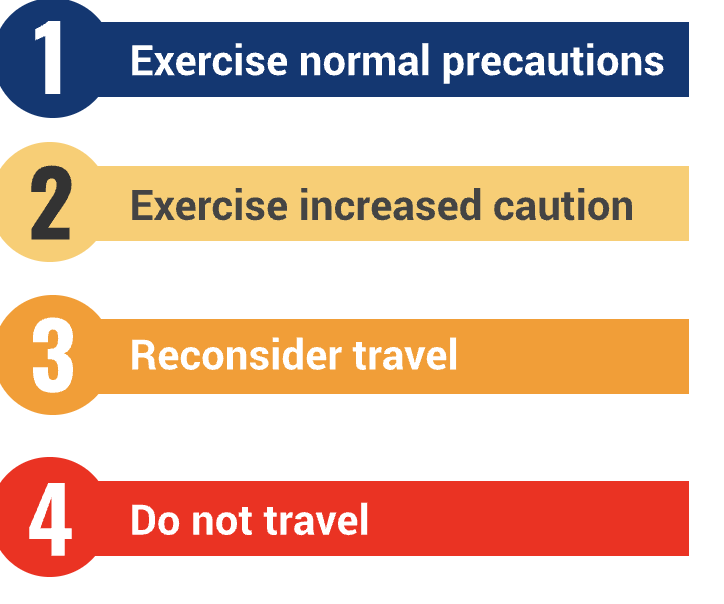



Consulting these travel advisory websites can offer valuable insights on:
- Potential risks
- Local laws and customs
- Health and safety tips to keep in mind
You can also find information about entry and exit requirements, visa processes, and possible restrictions due to the ongoing pandemic or other unforeseen circumstances.
Utilize the information from these sites to plan your trip more effectively and ensure you have the necessary precautions in place. This knowledge will help you make informed decisions and prepare for any potential challenges during your solo adventure.
But, don’t let that deter you from visiting certain countries
As important as it is to take into the safety considerations of your preferred destination before booking the trip, don’t let this scare you away from visiting a new country!
It’s important to note that some countries may be relatively safe for travelers, despite what the advisories might suggest. These sites tend to err on the side of caution, and local conditions might not be as severe as they are portrayed.
One example of a country that often has travel advisories but is generally safe for solo travel is Mexico.
The U.S. Department of State often issues advisories for certain regions in Mexico due to crime and violence. Yet many popular tourist destinations such as Cancun, Playa del Carmen, Tulum, and Mexico City remain relatively safe for solo travelers.
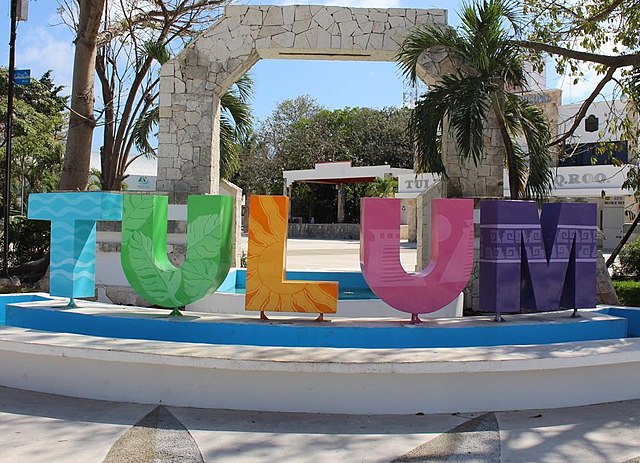



While it’s crucial to be aware of potential risks, don’t let that completely deter you without doing some extra research. As with any destination, exercising caution and staying informed are key to a safe and memorable solo travel experience.
I’ve traveled solo to Tulum myself, and had an enjoyable experience with no safety issues whatsoever.
Just use common sense and research the specific areas you plan to visit within the country. Always take necessary precautions, such as avoiding travel at night or venturing into high-risk zones.
Check out my YouTube video for some inspiration on the best solo travel destinations to visit!
Consulting local sources, online forums, or fellow travelers can also provide further insights into the safety of specific regions and help you make well-informed decisions during your trip.
Be sure to also research common scams and take note of local customs to avoid any unwanted surprises!
Factoring in your budget
Not all destinations are created equal when it comes to cost. Keep your budget in mind when selecting a destination.
Southeast Asia, for example, is renowned for its affordability, while Western Europe tends to be pricier.
Use resources like Numbeo to compare living costs in different cities and countries.
Seasonality and weather
Timing is everything! Research the best time to visit your chosen destination, considering factors like weather, peak tourist season, and local festivals.
While traveling during the off-season can save you money, it may also limit your options for activities and accommodations.
Double-check visa and entry requirements
Don’t let red tape ruin your trip! Research visa and entry requirements for your destination well in advance.
Some countries offer visa-free entry or visa-on-arrival for certain nationalities, while others require you to obtain a visa before arrival. The IATA Travel Centre is a useful resource for checking visa requirements based on your nationality and destination.
Also, ensure your passport is valid for at least six months beyond your planned travel dates.
There would be nothing worse than planning a whole trip, shelling out tons of $$ on airfare, hotels, and activities… just to get turned away at the border.
And yes, they will actually turn you away. Make sure your passport is up to date to avoid any mishaps!
4. Create A Travel Itinerary
Now that you’ve chosen your destination, it’s time to dive into the fun part—planning your itinerary!
Research top attractions, hidden gems, and local experiences that align with your interests. Travel blogs, guidebooks, and social media can be treasure troves of inspiration.
Don’t forget to read reviews from fellow travelers to help you prioritize your must-see sights!




With so many amazing places to see, it can be tempting to cram everything into your itinerary. However, it’s important to prioritize your must-see sights to avoid travel burnout.
Create a list of your top attractions and allocate time for each one, ensuring you leave enough wiggle room for serendipitous discoveries.
I always use GetYourGuide to book my activities and excursions whenever I travel!
They have a reviews section where you can see reviews and advice from other travelers that’ll help you determine which tour you want to book (or not book)! I find this super helpful when planning out the exact attractions I want to see.
Another thing I like to do before a trip to a new place is to look up the city’s location on Instagram, to see what places other people are posting about. This is an easy way to find some cool places that may not be well-known or listed online.
It’s also my #1 technique for finding cool photo spots around the city!
Balancing relaxation and exploration
While it’s natural to want to make the most of your trip, don’t forget the importance of downtime.
If you’re an introvert like me, (and yes, introverts can travel solo too!) – then you know the importance of needing to recharge your “social battery” from time to time.
Schedule time for relaxation, whether it’s sipping coffee at a local café, reading a book in a park, or simply people-watching. This will help you recharge your batteries and be able to fully appreciate your surroundings.
Building in flexibility
A well-planned itinerary is essential, but so is leaving room for spontaneity.
Don’t be afraid to veer off course if you stumble upon an enticing local market or receive a tip about a can’t-miss experience. Being open to new experiences and having a flexible itinerary is one of the joys of solo travel.
Some of my best moments solo travel happened because I was spontaneous with my schedule and did something out of my comfort zone!
Estimating travel times between destinations
When planning your itinerary, don’t underestimate the time it takes to get from point A to point B. Research travel times between destinations, factoring in potential delays and layovers.
This will help you avoid overscheduling and ensure you have enough time to fully enjoy each location.
Don’t jam-pack your schedule – leave some wiggle room for emergencies and impromptu activities.
5. Book your flight!
Eeeeeek – sh*t is getting real now!
It’s the moment you’ve all been waiting for…
Time to book your flight!
When booking flights, consider factors like price, layovers, and airline reputation. Consult airline review websites like Skytrax to help you make an informed decision.
I can’t stress enough how important it is to read reviews of the airline before booking.
I once booked a flight with an airline that had poor reviews, and my luggage ended up lost for days! Lesson learned: always do your research.
Tips for finding the best deals
To snag the best deals on flights, it’s a good idea to be flexible with your travel dates and book well in advance. Use flight comparison websites like Skyscanner or Google Flights to find the most affordable options.
You can search for flights on Skyscanner here 👇
Don’t forget to sign up for price alerts and consider booking during sales or promotions!
I once saved hundreds on my last trip to Mexico by being flexible with my travel dates and catching a last-minute deal!
On-the-ground transportation
Now’s also a good time to think about how you’ll get around in your destination once you get there.
- Are you going to a big city, with an efficient metro or subway system?
- Or will you be in a small town, with no choice but to drive or walk around to the major sites?
Take a minute to map out your options for getting around the city, so we can choose which is the most efficient option for your trip.
Public transportation
Public transportation is often the most budget-friendly and eco-conscious way to get around. Research local transportation options like buses, trains, or subways, and familiarize yourself with routes, schedules, and payment methods.
On my first solo trip to Switzerland, I didn’t research the public transport system and ended up on the wrong bus. It took me hours to get back on track! Don’t make the same mistake.
Taxis and rideshares
Taxis and rideshares can be convenient, especially when you’re carrying luggage or traveling late at night. Research reputable taxi companies and rideshare apps like Uber or Lyft to ensure a safe and comfortable ride.
In some cities, I’ve found that using local taxis can be more cost-effective than Uber or Lyft.
Bike and scooter rentals
Renting a bike or scooter can be a fun and efficient way to explore your destination. Look for bike-sharing programs or rental shops, and familiarize yourself with local traffic laws and safety guidelines.
I once rented a scooter in Thailand without knowing the local road rules and had a few close calls! Make sure you’re well-prepared before hitting the road.
Car rentals
Renting a car can provide you with the freedom to explore at your own pace. Compare rental rates on websites like Kayak or Discovercars.com. Don’t forget to check if you need an international driving permit or additional insurance coverage.
During a trip to England, I didn’t realize I needed an international driving permit and had to scramble to find a solution at the last minute. Do your research to avoid unnecessary stress.
When traveling between cities or countries, research the most convenient and cost-effective options, such as trains, buses, or flights! Websites like Rome2rio can help you compare different modes of transportation and their respective prices.
Remember, fellow solo travelers, learn from my experiences and mistakes to ensure a smoother journey. The more prepared you are, the more you can focus on enjoying your adventure!
5. Book Accommodations
Alright, you’ve made it this far!
You’ve chosen your destination, booked your flight, scouted out all the best #instaworty photo spots in your city, and maybe even booked an activity or two.
Now for the fun part – booking your hotel!
Before we can click ‘confirm’ on that glorious booking and start packing our bags, we have to decide what type of accommodation to stay in.
Types of accommodations: Hostel vs Hotel?
Hotels
Hotels can be a comfortable and convenient option, especially if you value privacy and amenities like room service or daily housekeeping. Look for hotels with positive reviews, particularly from solo travelers.




On my first trip to New York City, I learned the hard way that not all hotels are created equal… But that’s a story for another time!
Long story short: do your research and find a hotel room that suits your needs and budget.
Hostels
Hostels are a great way for budget-conscious solo travelers seeking a social atmosphere. Opt for hostels with communal areas and organized events to increase your chances of meeting like-minded adventurers.
You can book a bed in a dorm room, where you’ll share a huge room with 8, 10, and sometimes up to 15 other people! Or for a little more privacy, you can opt for a private room.
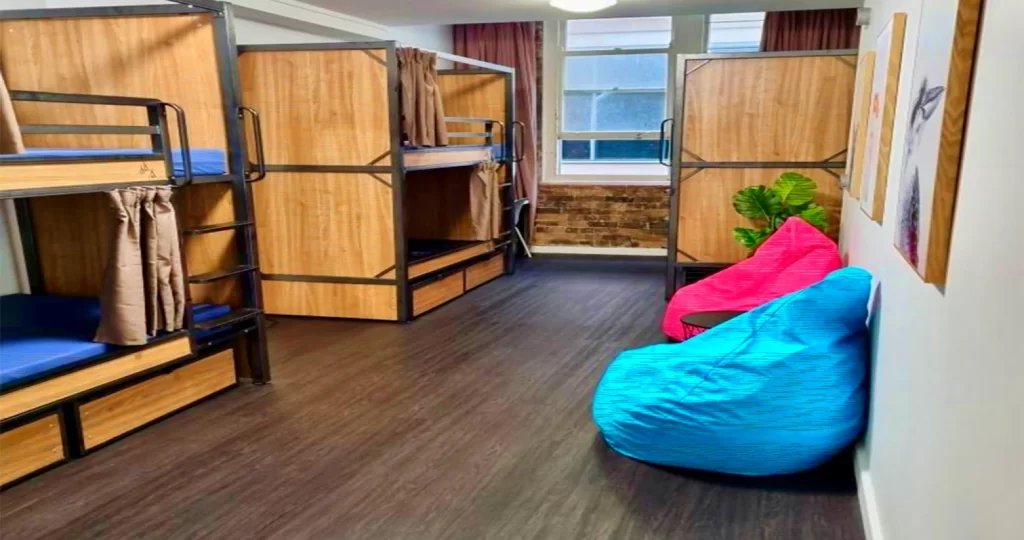



Hostels get a bad rep and freak a lot of people out, but honestly, I love them.
They’re a solo traveler’s best friend when it comes to traveling the world on a budget, and it’s the easiest way to meet some fun people to explore a foreign country with.
P.S. If you’re a hostel newbie, have no fear! I’ve written a complete guide on what hostels are and what to look for when booking one for the first time.
Hostels are also great because there are usually always tons of events going on, which makes it a good place to socialize and connect with fellow solo travellers.
For example, in Athens, I stayed at a fantastic hostel that organized group trips and walking tours. It was one of the best ways to join some group activities and have some company to visit the city’s most popular attractions with!
Vacation rentals
Platforms like Airbnb and VRBO offer a range of vacation rentals, from cozy studios to luxurious villas. This option is ideal if you prefer a home-away-from-home experience.
A friend of mine once rented a small townhouse in a quaint Italian village, and it ended up being the perfect place to immerse herself in the local culture.
These can sometimes be a bit more pricey than staying in a hostel or even in a hotel, but in some regions, renting an apartment can actually be cheaper than staying in a hotel! Have a look at the prices and see what would be more cost-efficient for your destination and travel dates.
Couchsurfing
Couchsurfing is a platform that connects travelers with locals offering a spare couch or bed for free. This can be a fantastic way to immerse yourself in the local culture while saving on accommodation costs.
Just be sure to read reviews and trust your instincts when choosing a host!
I’ve had incredible experiences couchsurfing, but I’ve also heard some people with not-so-great experiences. Though I wouldn’t recommend this for a first time solo trip, it’s always an option if you’re wanting to save some money on accommodations.
But just to be on the safe side, always make sure to let a family member or travel companion know where you’re staying.
Considerations when choosing accommodations
Location
A centrally-located accommodation can save you time and money on transportation. Look for lodgings close to public transport, attractions, and amenities like restaurants and shops.
I have (more than once, admittedly) booked a hotel far from the city center in an attempt to save a few dollars. The commute was not only expensive, but also time-consuming.
At the end of the day, the few coins that I saved were not worth the hassle.
Safety
Safety should always be a priority, particularly for solo travelers. Research the neighborhood, read reviews, and opt for accommodations with secure entrances and good lighting.
When I traveled solo to Bangkok, I made sure to choose a well-reviewed hotel in a safe area, and it made all the difference!
Amenities
Consider the amenities that are important to you, such as Wi-Fi, air conditioning, or laundry facilities.
Keep in mind that budget accommodations may have fewer amenities, but sometimes a friendly atmosphere and a prime location can more than make up for it.
Booking tips and tricks
To get the best deals on accommodations, consider booking directly through the property’s website or contacting them via email or phone. Also, don’t be afraid to compare prices across various booking platforms like Booking.com or Expedia.
Lastly, keep an eye out for discounts or special offers, especially if you’re traveling during the off-season.
6. Pack and Prepare for Your Trip
It’s getting closer!
Now you’re reading to start packing your best ‘fits and gathering all of your most important documents you’ll need for your trip.
Here’s the low-down on how to efficiently pack for your first solo trip.
Obtaining the necessary travel documents
Ensure your passport is valid for at least six months beyond your planned travel dates. If you need to renew or apply for a new passport, allow ample processing time.
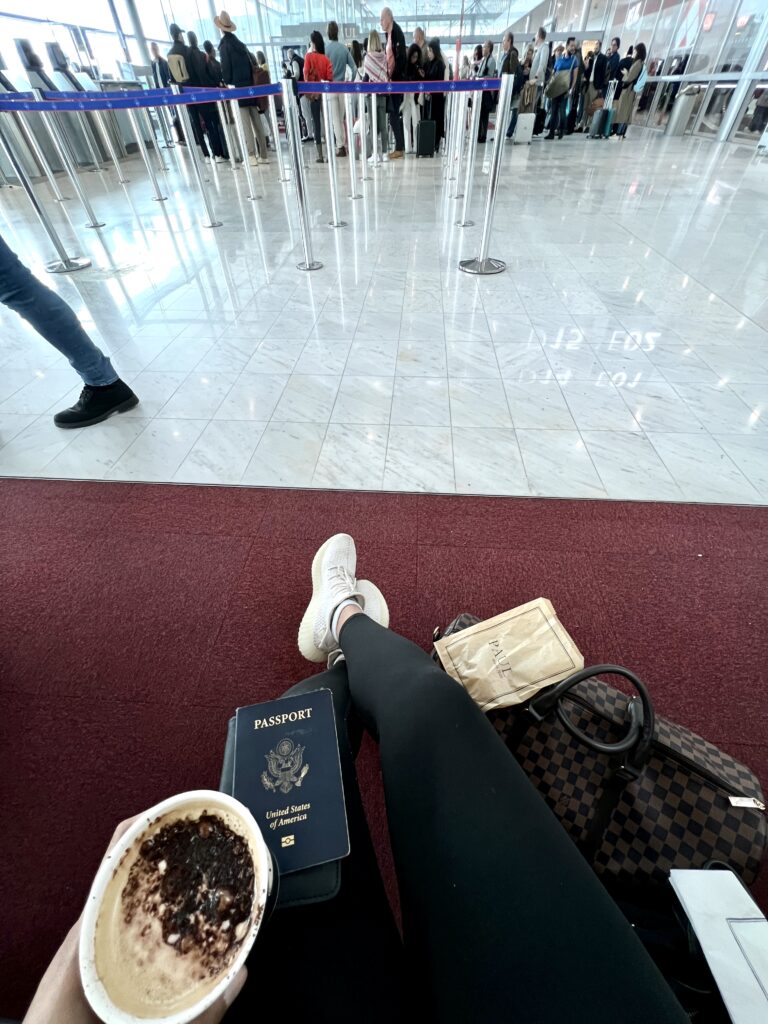



I once had a friend who had to postpone her trip to Europe because her passport was expiring soon, and she didn’t realize it until it was too late.
It was a small mistake that ended up costing her hundreds of dollars to fix, and could’ve easily been avoided.
Check if you need a visa for your destination and follow the application process accordingly. Some countries require you to apply in person at a consulate or embassy, while others offer e-visas or visa-on-arrival services.
When I traveled to Tanzania, I had to apply for an e-visa in advance, which was a smooth and easy process.
Research any required or recommended vaccinations for your destination. Consult with a travel health clinic or your healthcare provider to ensure you’re up-to-date on necessary immunizations.
Buying a travel insurance policy
When it comes to planning a trip, there are some things you can afford to skip out on to save a little bit of money.
Travel insurance is NOT one of them.
Accidents happen, and it’s always better to be safe than sorry. Seriously, if you don’t listen to any of the other solo travel tips I’ve given in this article, hear me out on this.
Invest in a comprehensive travel insurance policy that covers medical expenses, trip cancellations, and lost or stolen belongings. Compare policies on websites like Safety Wing to find the best fit for your needs.
I once had to use my travel insurance to cover medical expenses while abroad, and it was – quite literally – a lifesaver.
I can’t stress enough how vital this is!
You can get a travel insurance quote from Safety Wing here 👇
Health and safety precautions
Getting sick is never really on anyone’s travel plan, yet it still happens more often than not. Take the necessary steps to safeguard your health while traveling.
Bring a well-stocked first-aid kit, pack any prescription medications, and familiarize yourself with the location of nearby hospitals or clinics. Also, research local food and water safety guidelines to avoid potential health risks.
On my first solo trip, I got sick from eating street food in Thailand – which taught me to be more cautious about food hygiene.
If you have space in your suitcase, think to pack a few simple items like Tylenol, Ibuprofen, anti-nausea medicine, and whatever else you may need that might be hard to find in your location.
Packing essentials and tips
Packing efficiently can truly make or break your solo travel experience!
Make a packing list tailored to your destination’s climate, activities, and cultural expectations. Pack versatile clothing, travel-sized toiletries, and essential electronics like a charger and adapter.
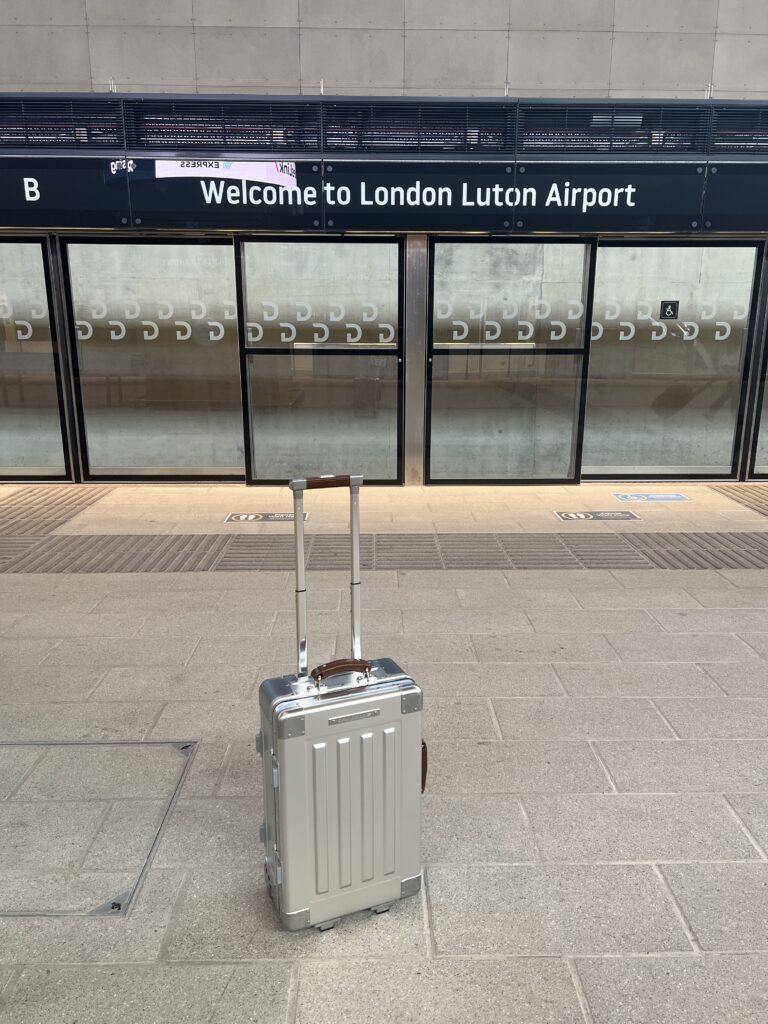



Remember, less is more—traveling light will make it easier to navigate public transportation and crowded streets.
Related read: How to pack for multiple destinations (without overpacking)
During a trip to Europe, I overpacked and struggled with heavy luggage in busy train stations. It was super annoying (and honestly a bit embarrassing), but it taught me the importance of packing light.
Staying connected: local SIM cards and Wi-Fi options
Staying connected while traveling is important for both safety and convenience. Research local SIM card options or international roaming plans with your current provider.
Depending on how long you’re staying in your destination, it may be more cost-effective to buy a local SIM card once you arrive.
For example, in Thailand, you can get a local SIM card with about a month’s worth of data (20GB or so) for only about $25. This is waaaay cheaper than most US roaming plans, who sometimes charge upwards of $1 per minute while you’re overseas.
I’d recommend checking out Airalo, a convenient eSIM marketplace that offers a variety of affordable data plans for solo travelers.
With Airalo, you can easily stay connected while abroad, allowing you to access important information, navigate unfamiliar places, and stay in touch with friends and family without the hassle of switching physical SIM cards.
7. Making the Most of Your Solo Travel Experience
Congrats – you’ve made it to the last step of planning your first solo trip!
Before you take off, let’s talk about some quick tips to keep in mind in order to make the most out of your solo trip.
Be open to new connections
Remember: Solo travel doesn’t have to be lonely!
Be open to meeting new people by striking up conversations with fellow travelers or locals. Hostels, walking tours, and group classes or workshops are great opportunities for making connections.
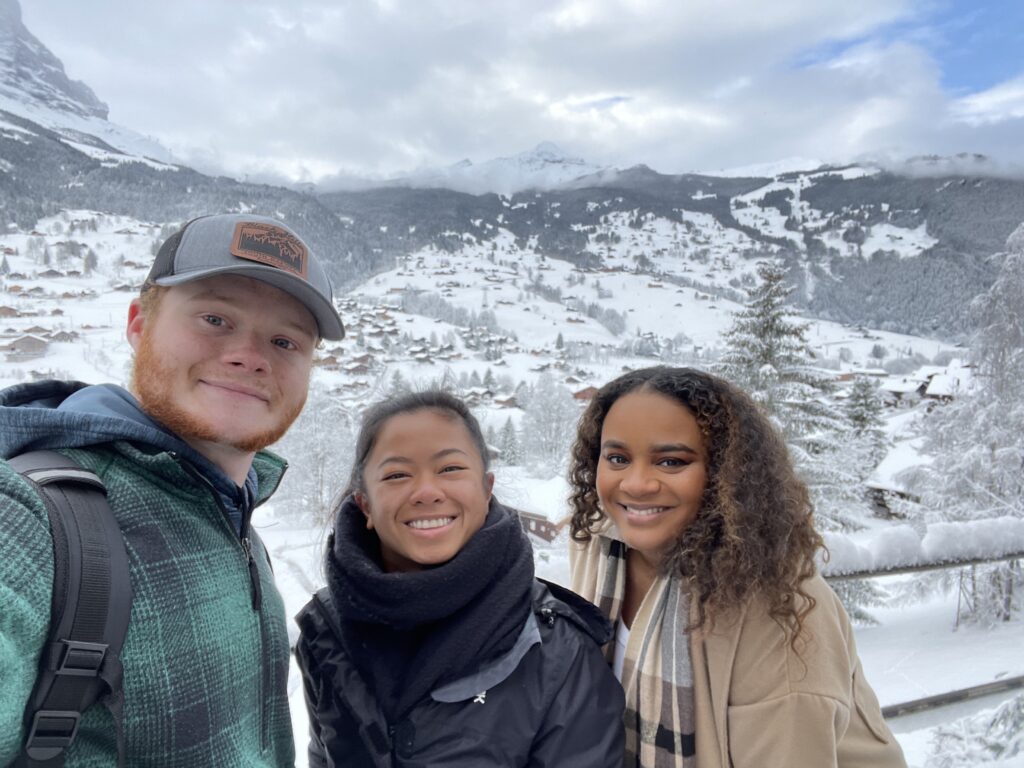



You can also use apps like Couchsurfing or even Facebook groups to find fellow travelers and local events.
You never know, you might even make some lifelong friends while traveling abroad!
Embracing local culture
One of the joys of travel is immersing yourself in new cultures.
Learn a few basic phrases in the local language, try traditional foods, and attend local festivals or events. Engage with locals by asking questions, respecting customs, and being open to new experiences.
As they say – when in Rome, do as the Romans do!
Practicing responsible tourism
As a traveler, it’s essential to be mindful of the impact you have on the places you visit.
Practice responsible tourism by respecting local customs, supporting local businesses, and being conscious of your environmental footprint. Educate yourself on sustainable travel practices and strive to leave a positive impact wherever you go.
Thanks for reading!
And there you have it, fellow globetrotter! With this ultimate step-by-step guide in hand, you’re well-equipped to plan and embark on your first solo adventure.
Trust your instincts, embrace the unknown, and savor every moment of your journey. The world is waiting for you—go forth and conquer it!
Hi, I’m Tiana – founder of and author here at Where Tiana Travels. I’m a 20-something with a love for all things travel, photography, and food. I have been living abroad for the past 5 years and solo traveling the globe in my free time. I created this blog to share my travel stories and inspire other women to go out and see the world. Read more about me here!

